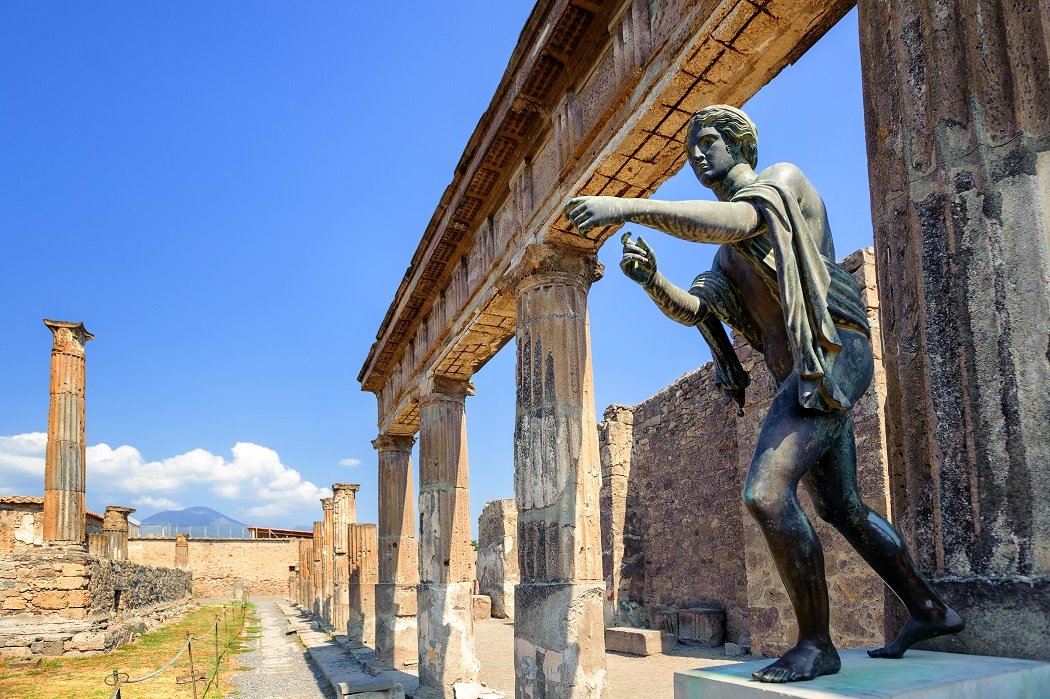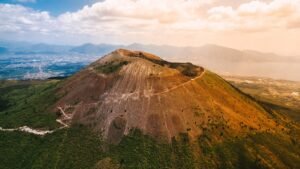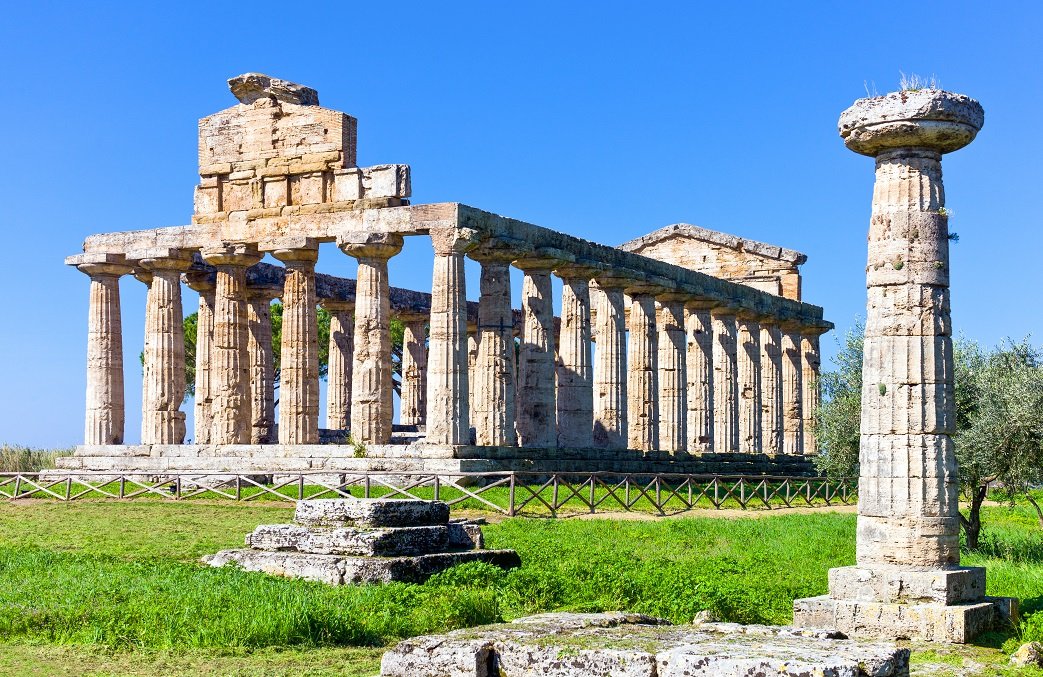Campania is a land of emotions, colours and sounds. The Gulf of Naples, the Amalfi Coast and the Sorrento Peninsula satisfy the gaze. The islands of Capri, Ischia and Procida are small magnetic points of the universe where sea caves, incomparable panoramas and terraced lemon gardens meet to create a unique atmosphere. Art and culture run through not only the large urban centres teeming with life, but also the small villages and towns where you can read the testimonies of ancient and illustrious people who once inhabited them.

"No matter what is said, narrated or painted, Naples surpasses everything: the shore, the bay, the gulf, Vesuvius, the city, the nearby countryside, the castles, the promenades... I pardon all those to whom the sight of Naples makes their senses go blank!"
(Johann Wolfgang von Goethe)
Situated between the Tyrrhenian Sea to the west and the southern Apennines to the east, Campania is one of the most morphologically varied regions of our peninsula. With its predominantly hilly terrain, it has a coastline that is sometimes low and sandy, sometimes rocky and high, where the beaches of the gulfs create scenic panoramas stretching out towards the sea. 'A Muntagna' is the name by which the Neapolitans used to call Vesuvius, the symbol of the entire region, whose perfect shape embraces the Gulf of Naples. The majestic cone dominates an eerie, evocative atmosphere and the panorama from the top of the volcano sweeps from the Sorrento Peninsula to Cape Posillipo, offering unforgettable emotions. Campania's territorial conformation is changeable, which is why many places are characterised by a combination of elements that make them unique. Beaches, sandy and shallow in Cilento, turn into bays with deep rocky bottoms on the Sorrento peninsula. Populous and lively cities such as Salerno, Naples and Caserta border on villages and hamlets immersed in a magical silence. And on the coast, the rich Mediterranean vegetation frames the blue sea or flourishes on the terraces of vines, olive and citrus trees that - man-made - have been part of the natural landscape for centuries.
In Campania, it is possible to experience the territory in many different ways, choosing the one that best suits your idea of travel and exploration. The views overlooking the sea are protagonists on the Sentiero degli Dei (Path of the Gods): a hiking itinerary that goes from Agerola to Positano. Walking on the ridge of Vesuvius and visiting Pompeii, the enchanted city that is still alive after more than 2,000 years, are not-to-be-missed experiences that transport you to distant and mysterious dimensions. Lovers of authentic and characteristic villages, on the other hand, will be able to choose between the seaside towns on the coast and those in the mountains, in the Benevento area or Irpinia, where they can rediscover silent places and ancient stories. Art and culture, then, will accompany travellers to symbolic places such as the Reggia di Caserta, considered the Versailles of Campania, a luxuriant complex that was once a Bourbon residence, or the Park and Archaeological Museum of Paestum: one of the best-preserved sites of the Magna-Greek civilisation in Italy, with the palpable traces of the Sybarites, Oenotrians, Campanians, Lucanians and Romans. But Campania also reserves taste experiences. These, made up of typical dishes and products made with care and passion, can be rediscovered in local trattorias or during interesting food and wine tours.
Campania, just like all the regions of Southern Italy, is a true paradise for the taste buds! Pizza making in Naples is a true art and boasts recognition as a Unesco Intangible Heritage Site, achieved thanks to the skill of the pizza makers who have created gastronomic excellence with this tradition. The buffalo mozzarella and Piennolo del Vesuvio cherry tomatoes will ensure a distinctive taste experience. The black gold of Naples, Neapolitan coffee prepared in the traditional coffee pot called cuccumella, is a ritual that is still carefully performed and represents a true cult, so much so that refusing a coffee, if offered, is almost tantamount to an offence. The Neapolitan Ragù, praised also by Eduardo De Filippo, is another must-have dish, provided it is simmered for several hours until it becomes very creamy in consistency, as tradition demands. And what about the Babà? A regional dessert par excellence, drowned in rum, or the sfogliatella to try in curly or shortcrust version. In every season, you will be able to taste something special: the inevitable chestnuts from Irpinia in the autumn, the typical Easter pastiera from Campania and the colourful cianfotta from Cilento, which, during the summer, will make you appreciate the vegetables of which it is a harmonious mixture.
In Campania, each time of year is marked by its own events, and each season is an opportunity to highlight a different aspect of this composite region. During the Christmas period, the Luci d'Artista in Salerno dazzle the city centre with extraordinary illuminations, while the castles of Lettere (Na) and Limatola (Bn) are filled with decorations and markets, creating fairy-tale settings. In spring and summer, folklore events and popular festivals mix the sacred and the profane, such as the Madonna delle Galline festival in Pagani (Sa): a procession in which the statue of the Madonna is carried on a cart to which the people offer chickens, ducks, turkeys and various birds. This is to celebrate the legend according to which it was chickens that found an ancient table depicting the Virgin, who later became the town's patron saint. But the deeper, more archaic soul of Campania lives on in the traditional events held in the small villages. Identity product festivals, such as the chestnut festival in Montella (Av) and ancient festivities such as the Chiena di Campagna (Sa) in which the course of the Tenza river is diverted and invades the village streets, are just some of the events that keep the popular culture of this wonderful region alive.











